Ultimate Guide to Dinosaur National Monument in Utah & Colorado

The Green River winds through Dinosaur National Monument as seen from Harpers Corner (Photo: Depositphotos)
Stretched across northeastern Utah and northwestern Colorado, Dinosaur National Monument boasts 210,000 acres of river, desert and mountain ecology. Layers of sandstone meet the confluence of the Yampa and Green rivers and remnants of rugged Western culture, from the land’s first inhabitants to pioneers, share the landscape with fossils including more than 1,500 dinosaur bones.
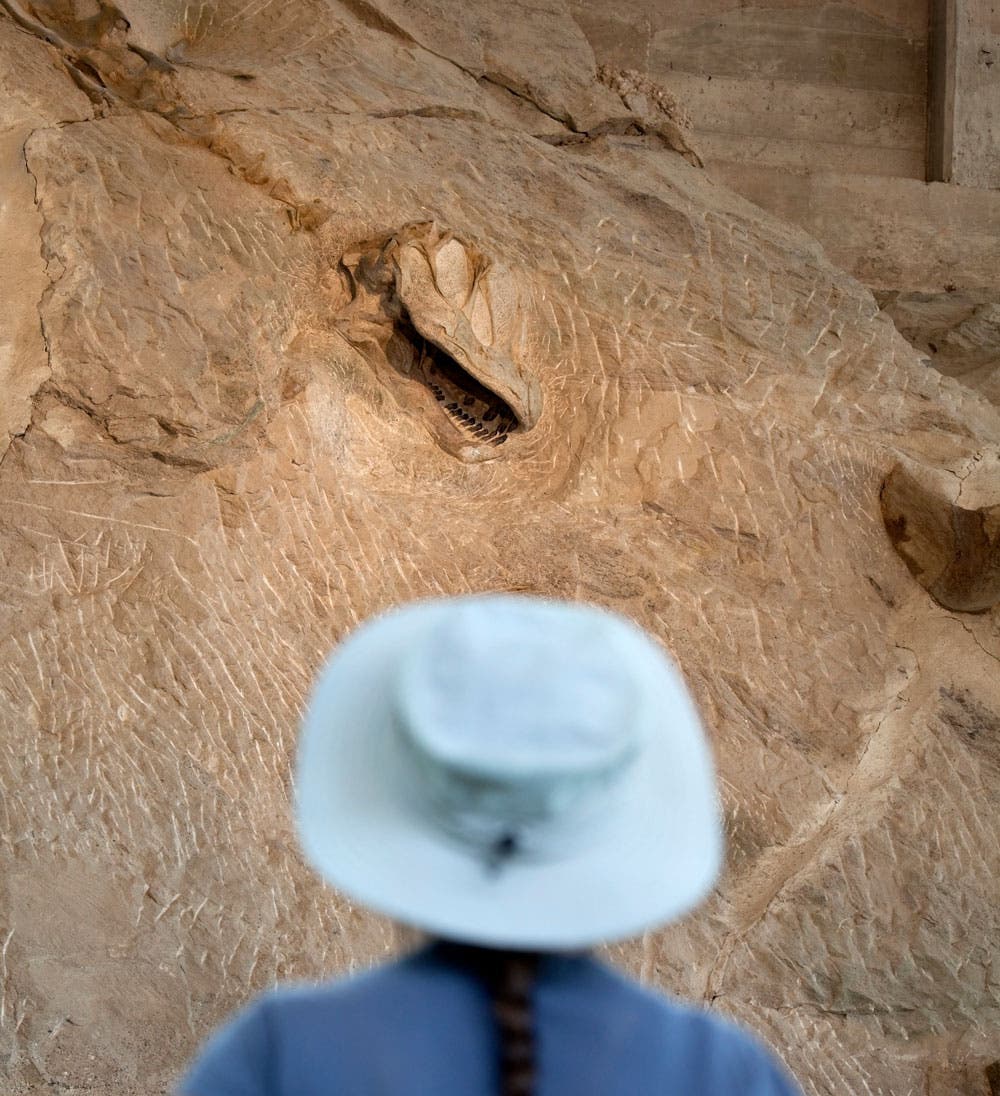
In 1915, President Woodrow Wilson established Dinosaur National Monument in an effort to preserve the now infamous dinosaur fossils that draw visitors to the park. As conservation efforts gained momentum, so too did official efforts to safeguard natural spaces. In 1938, President Franklin D. Roosevelt broadened protections for the sandstone cliffs and canyons of Echo Park, at the confluence of the Green and Yampa rivers. The wild beauty of this section of the Yampa was so important to conservationists and outdoor enthusiasts alike, its forever protection from the impedance of dams was traded for nearby Glen Canyon’s. Today, what’s left of that part of canyon country lies underneath Lake Powell thanks to the Glen Canyon Dam, but Echo Park’s Yampa River remains one of the last wild rivers in Colorado.
Located in a remote corner of the sister states, Dinosaur National Monument draws fewer visitors than more conspicuous spots like Bryce Canyon, Zion or Yellowstone. From hiking, biking and rafting to homesteads and ancient artifacts, there’s ample opportunity for adventure enthusiasts. You’ll want to stay more than a day at this awe-inspiring place to experience it all. At one of the monument’s six campgrounds sleep beneath world renowned skies where on a clear, cloudless night, more than 4,500 stars greet the naked eye.
Where Do You Enter Dinosaur National Monument?
Situated between Hwy. 40 and Interstate 80, Dinosaur National Monument straddles Utah and Colorado and there are multiple entrances and two visitor centers. The two most popular areas of the park are the Quarry accessed from Jensen, Utah, and Harpers Corner Road accessed from Dinosaur, Colorado. There are no internal park roads that connect the different areas of the park.
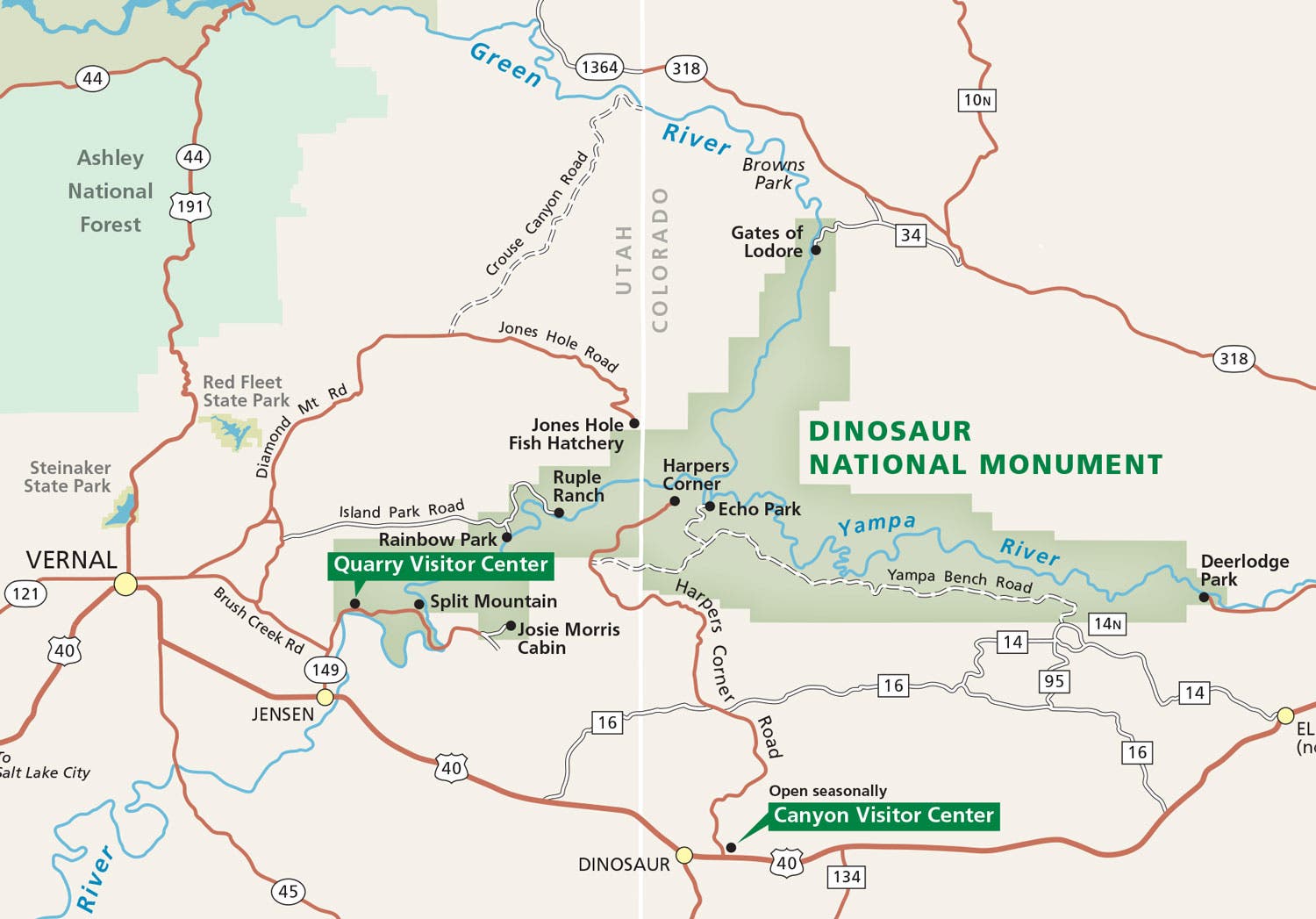
Quarry Entrance – Utah, paved roads
Seven miles north of Jensen, Utah, Hwy 149 leads to the Quarry Visitor Center with a gift shop, info desk and 12-minute park film. From there, head to the Quarry Exhibit Hall (see below), home to fossils and the acclaimed Wall of Dinosaur Bones. Then drive Cub Creek Road to see petroglyphs, attend a night sky presentation and picnic at a historic cabin.
Island Park Entrance – Utah, dirt roads, impassable when wet
Twenty-two miles north of Jensen, Utah, Hwy. 149 and Brush Creek Road lead to Island Park Road. Top attractions in this area of the park are the McKee Springs Petroglyphs, Ruple Ranch and Rainbow Park with one-day rafting trip launch sites. Don’t have a high clearance vehicle? Guided tours and rafting trips often stop at these attractions with visitor pickup in Vernal, Utah.
Harpers Corner Entrance – Colorado, paved road
Close to the tiny village of Dinosaur, Colorado, Harpers Corner Road starts at the Canyon Visitor Center and continues to several overlooks where canyons, rivers, and mountains meet. Although closed in the winter, the visitor center is a summertime hub and serves as park headquarters with a bookstore, water fountains and restrooms. The road itself is also closed in winter past the Plug Hat Butte picnic area.
Deerlodge Park Entrance – Colorado, paved road
From Craig, Colorado, drive 59 miles west on Hwy. 40 to reach Deerlodge Park. There you’ll find a campground, restrooms, hundreds of elk and a Yampa River rafting launch site.
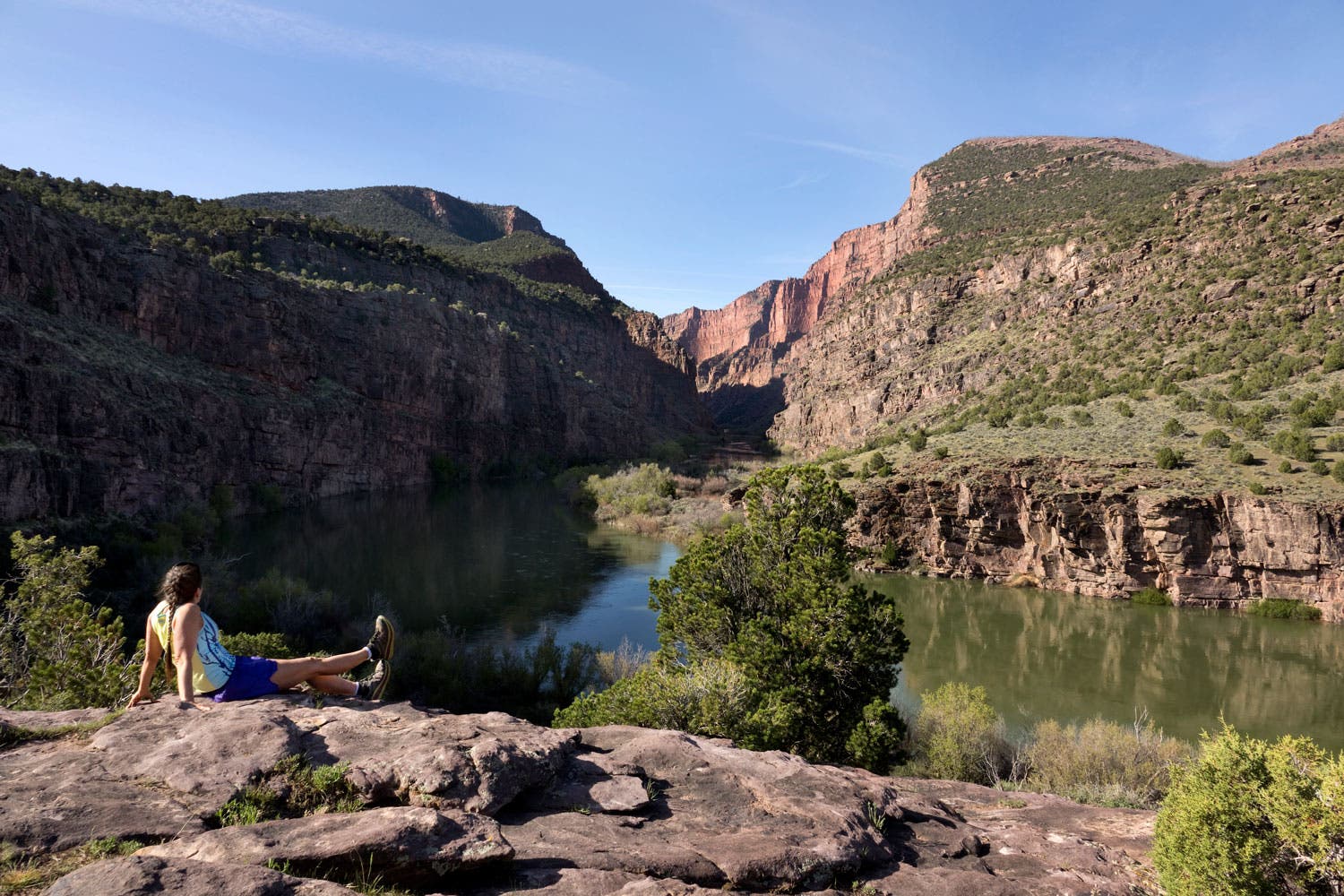
Gates of Lodore Entrance – Colorado, dirt road
If you’re headed for a multi-day Green River rafting trip, Lodore Canyon is your launch site. You’ll also find a campground, picnic area with vault toilets and a historic cabin. From Maybell, Colorado, follow Hwy. 40 west for a half mile then turn right onto Hwy. 318. After 46.2 miles, turn left onto Moffat County Road 34N. In 1.7 miles, turn right onto Moffat County Road 34. After 4.5 miles, you’ll enter the monument.
Dinosaur National Monument’s paved roads are easily accessed by all types of passenger vehicles.. Harpers Corner Road, Jones Hole Road, Utah 149 (Cub Creek Road) and Deerlodge Park Road are the four paved roads, while Echo Park Road, Gates of Lodore, Island Park Road and Yampa Bench Road are for high-clearance and all-wheel or four-wheel-drive vehicles only. Dinosaur National Monument is closed to any all-terrain vehicles or off-road traffic of any kind.
If you’re flying in, the closest airport is in Vernal, Utah, about an hour’s flight from either Denver or Salt Lake City.
All visitors to the monument must have a pass. If you have an America the Beautiful, or other interagency annual or lifetime pass, those will get you through the entrance stations at Dinosaur. Otherwise, a 7-day pass is $25 per vehicle. Passes can be purchased in advance online at www.nps.gov/dino/planyourvisit/fees.htm or at the Quarry Entrance Station. Passes cannot be purchased at other park entrances or visitor centers.
Things to Do in Dinosaur National Monument
See 149-million-year-old Fossils at the Quarry Exhibit Hall
Park at the Quarry Visitor Center on the monument’s Utah side and then head to the Quarry Exhibit Hall. Here, Jurassic Park aficionados will find the Wall of Dinosaur Bones, roughly 1,500 bones from an array of dinosaurs including Stegosaurus, Apatosaurus and Camarasaurus.
A seasonal summer shuttle runs between the two every 15 minutes. Or, if you’re up for a hike, set out from the visitor center along the 1.2-mile one-way Fossil Discovery Trail for evidence of ancient fossils embedded in the stone. Moderate terrain, Paleolithic wonders and gorgeous layers of sandstone make this hike a visitor favorite. With an elevation gain of just 200 feet, the Fossil Discovery Trail has occasional rocky sections and is suitable for kids. You’ll pass the Morrison Formation layer of rock, home to a plethora of plant and sea life fossils. If you’re not up for the full 2.4-mile roundtrip hike, you can take the shuttle back to the visitor center. In winter (and year round if you have an accessibility placard) you can drive to the exhibit hall in a ranger-led caravan. There are no trips to the exhibit hall after 5 p.m.
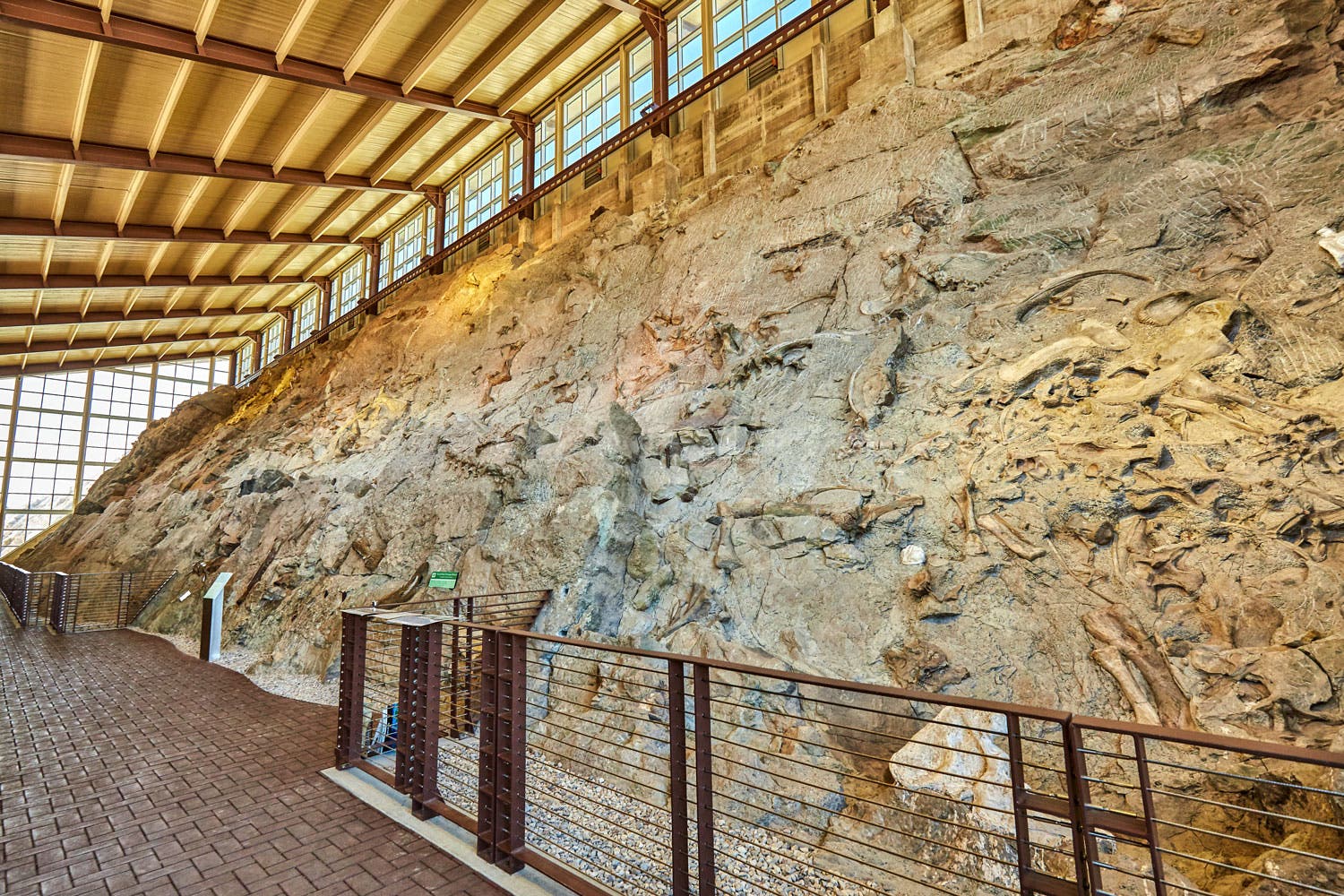
Spot Petroglyphs and Pictographs
Named after Utah’s Fremont River, the Fremont people—circa 200 to 1300 A.D.—created petroglyphs that resembled humans adorned with elegant earrings and headdresses. Highlighting their appreciation for neighboring fauna, you’ll also find ancient art depicting a variety of animals including lizards, birds and snakes. These carvings and etchings, or petroglyphs, and painted displays, known as pictographs, decorate large blocks of sandstone walls.
On the Utah side of the monument, you’re never far from petroglyph adventures. The Swelter Shelter Trail offers a closer look at those petroglyphs. From the Quarry Visitor Center, continue along Cub Creek Road to the parking area. From there, it’s a short and easy walk—roughly 400 feet—to a vast display of Fremont petroglyphs, known as “Classic Vernal Style.” Continue on Cub Creek Road for the Cub Creek petroglyphs between Turtle Rock and the Josie Morris Cabin.
If you’re up for more adventure, visit the McKee Spring Petroglyphs on Island Park Road. Since this road requires a high-clearance, four-wheel-drive vehicle and is closed when wet, most people see these marvelous sandstone artworks on a guided tour or with rafting outfitter transportation.
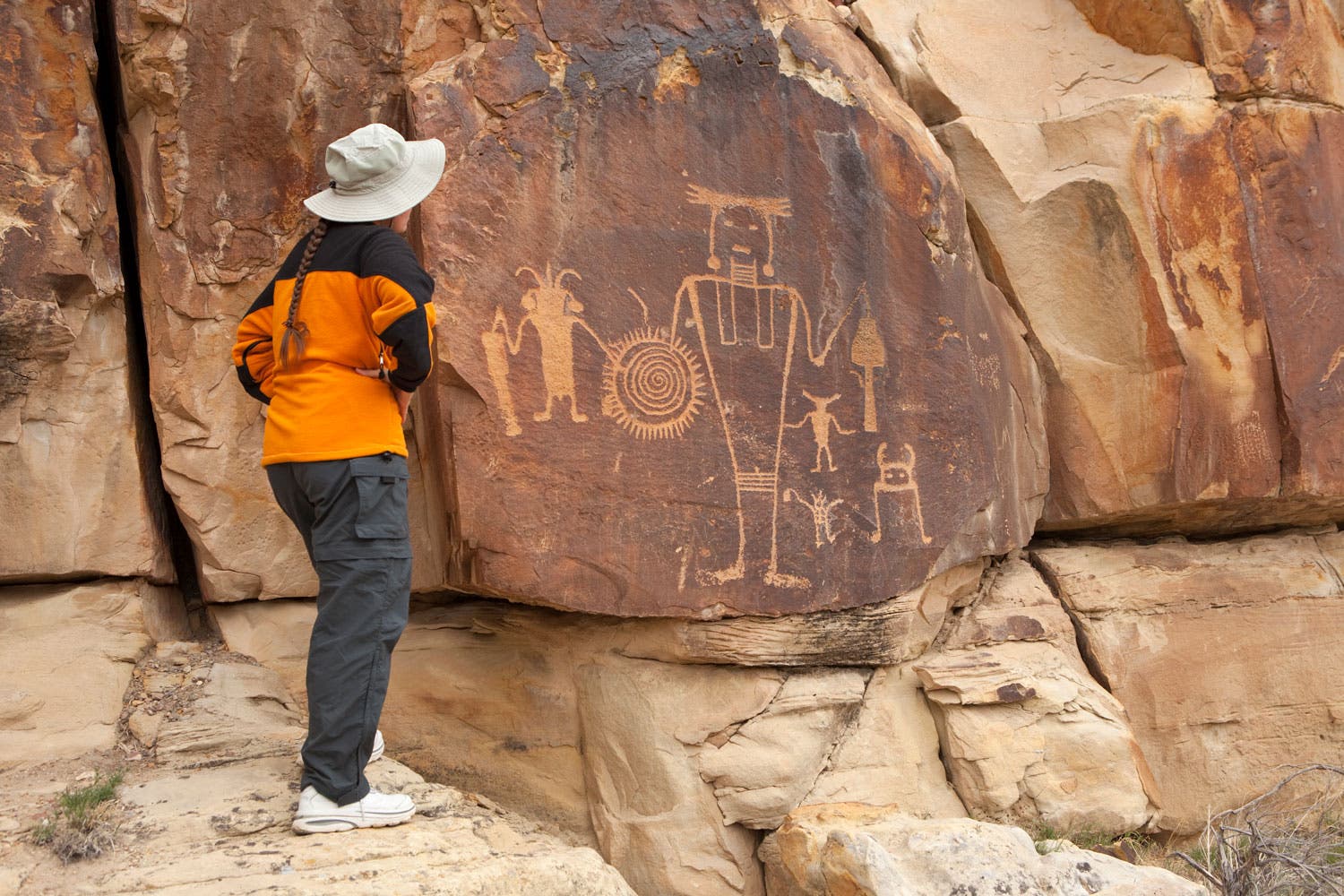
Visit the Josie Morris Cabin to Learn About Pioneer History
Standing alone at the end of Cub Creek Road on the Utah side of the park sits a relic of the Old West. Constructed in 1913 by Josie Bassett Morris—rancher, bootlegger and rugged individualist—the Josie Morris cabin is made of logs and grit. Considered a pioneer of more progressive norms for women, the four-time divorcee traded dresses for pants and lived alone for nearly 50 years in her cabin in the desert. It’s a beautifully shaded part of the park with picnic tables and restrooms near the cabin.
See the rest of Morris’ property on the half-mile (one-way) Box Canyon Trail. The path winds from the cabin into a three-sided box canyon, where Morris housed livestock, and her original cattle fence still stands.
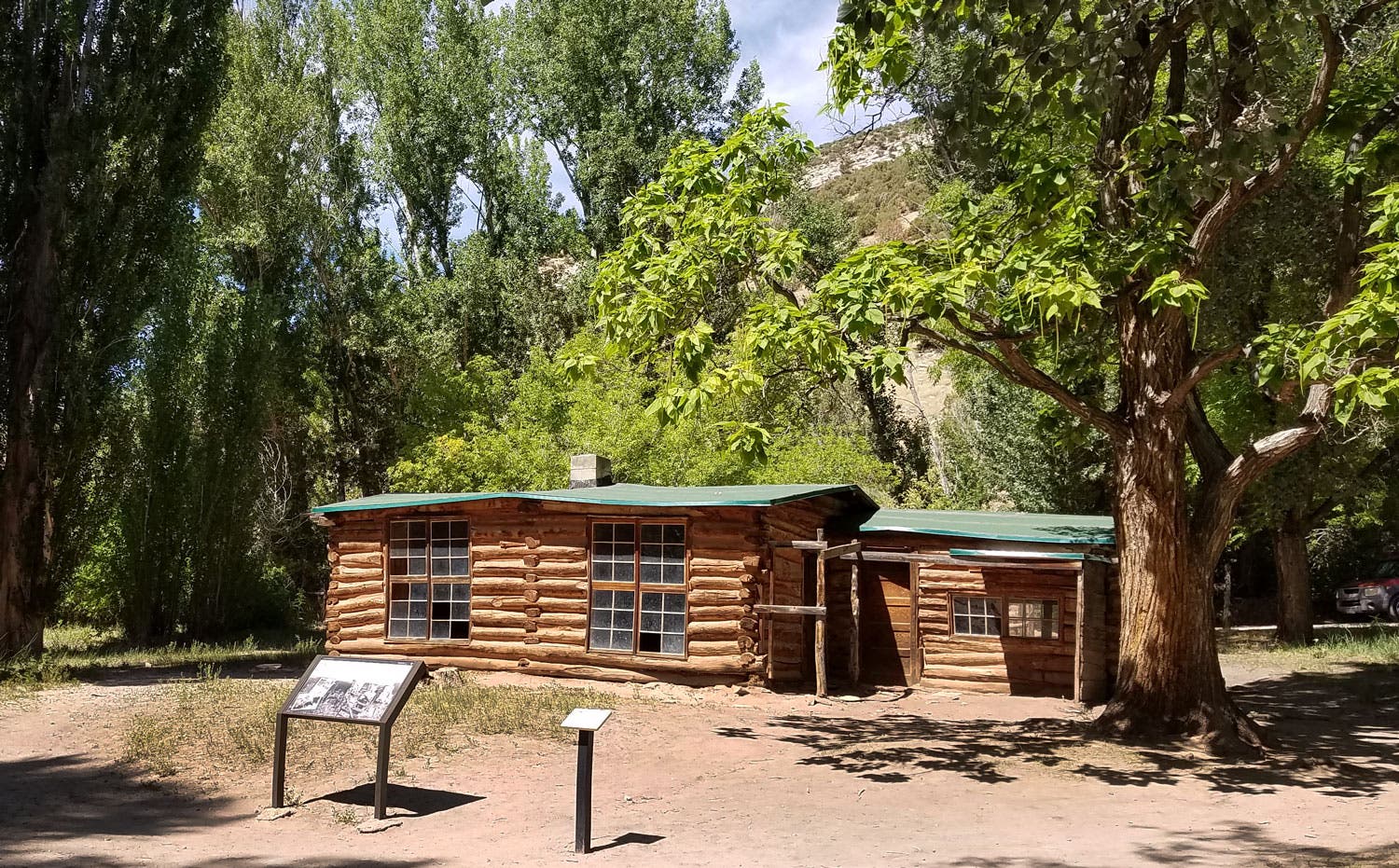
Hit the Trails in Dinosaur National Monument
For a more intimate look at the area’s prehistoric and geologic layers, park the car and travel by foot. The park is criss-crossed by hiking trails of different levels and duration. With nearly 15 trails across Utah and Colorado soil, grab a trail map for a complete list of treks. Here are a few hiking highlights.
On the Utah side of the monument, canyon buffs seeking a moderate hike, will enjoy the 6.1-mile out-and-back Hog Canyon Trail to a box canyon. With an elevation gain of 793 feet, this hike offers sun, shade and wide open spaces. For a moderate loop, try the Sound of Silence Trail, a 3.2-mile sampling of the variety of landscapes in the park: slick desert rock, traces of streams, exposed rock bands and a brief section of rock scramble. Bring shoes with traction and plenty of water for this sunny hike.
On the Colorado side, Dinosaur National Monument offers vistas and views of some of the more untouched spaces. Two of our favorite trails are accessed from Harpers Corner Road. The Ruple Point Trail provides a backcountry adventure. A 9.2-mile moderate to difficult route, this roundtrip trek winds across gentle hills and patches of green to an expansive view of Split Mountain Canyon and the Green River. At the end of Harpers Corner Road, the 2-mile roundtrip Harpers Corner Trail climbs to a panorama of the monument’s canyons and the Green River rushing below. If you’re afraid of heights, this adventure isn’t for you.
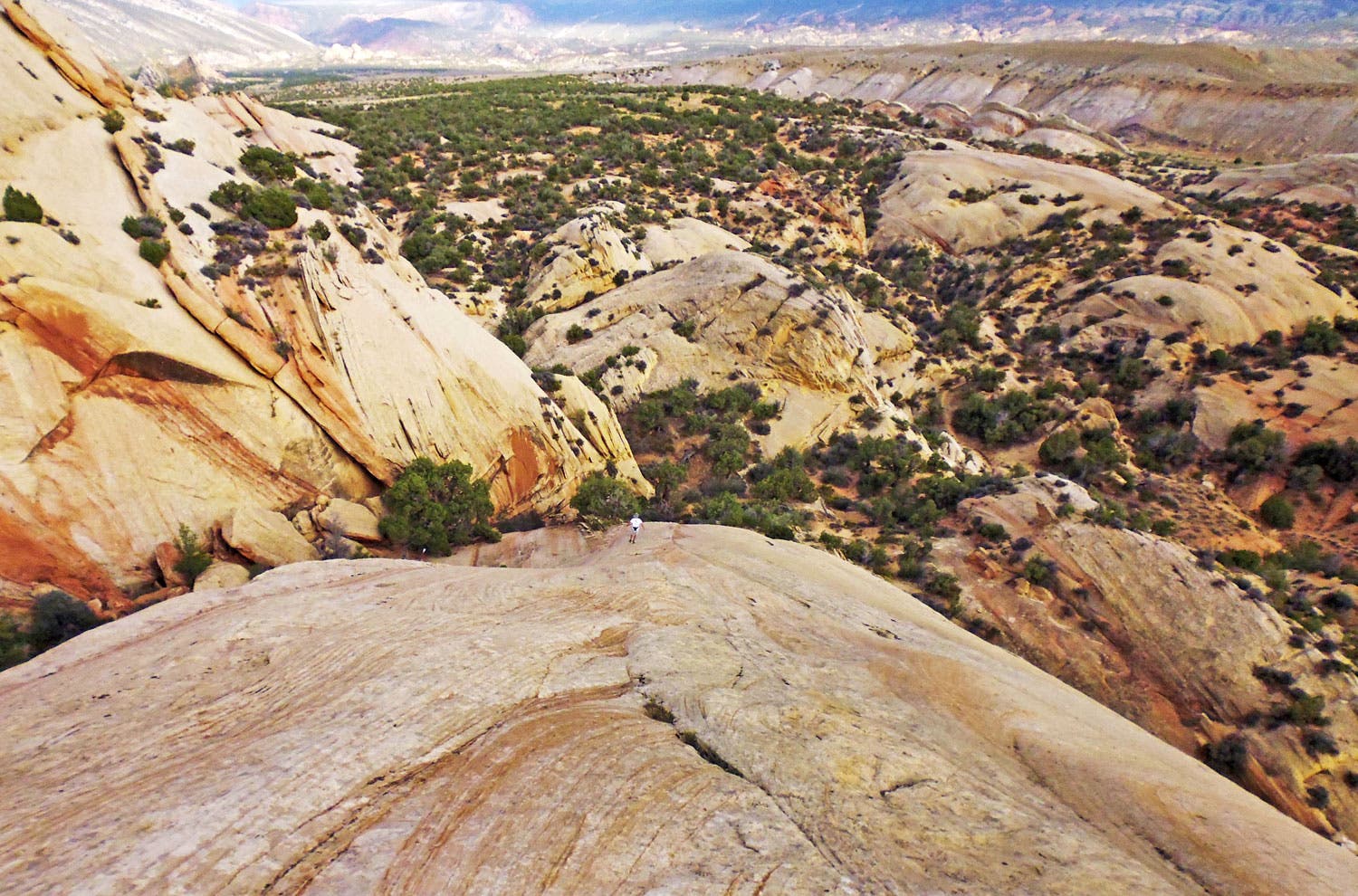
Stargaze Under Dark Skies
Far from light pollution, Dinosaur National Monument has been designated an International Dark Sky Park, known for its black skies and bright stars. Enter the Milky Way, myriad constellations and inimitable conditions for gazing into the abyss.
Follow the “stars” signs through Split Mountain Campground for summer ranger programs that guide your overhead journey, including a naked-eye constellation tour and telescope sightings guided by astronomers. Ask for program dates at a visitor center or call (435) 781-7700.
Be it via telescope, binoculars, or widened eyes, there’s ample opportunity throughout the park to see night skies shine.
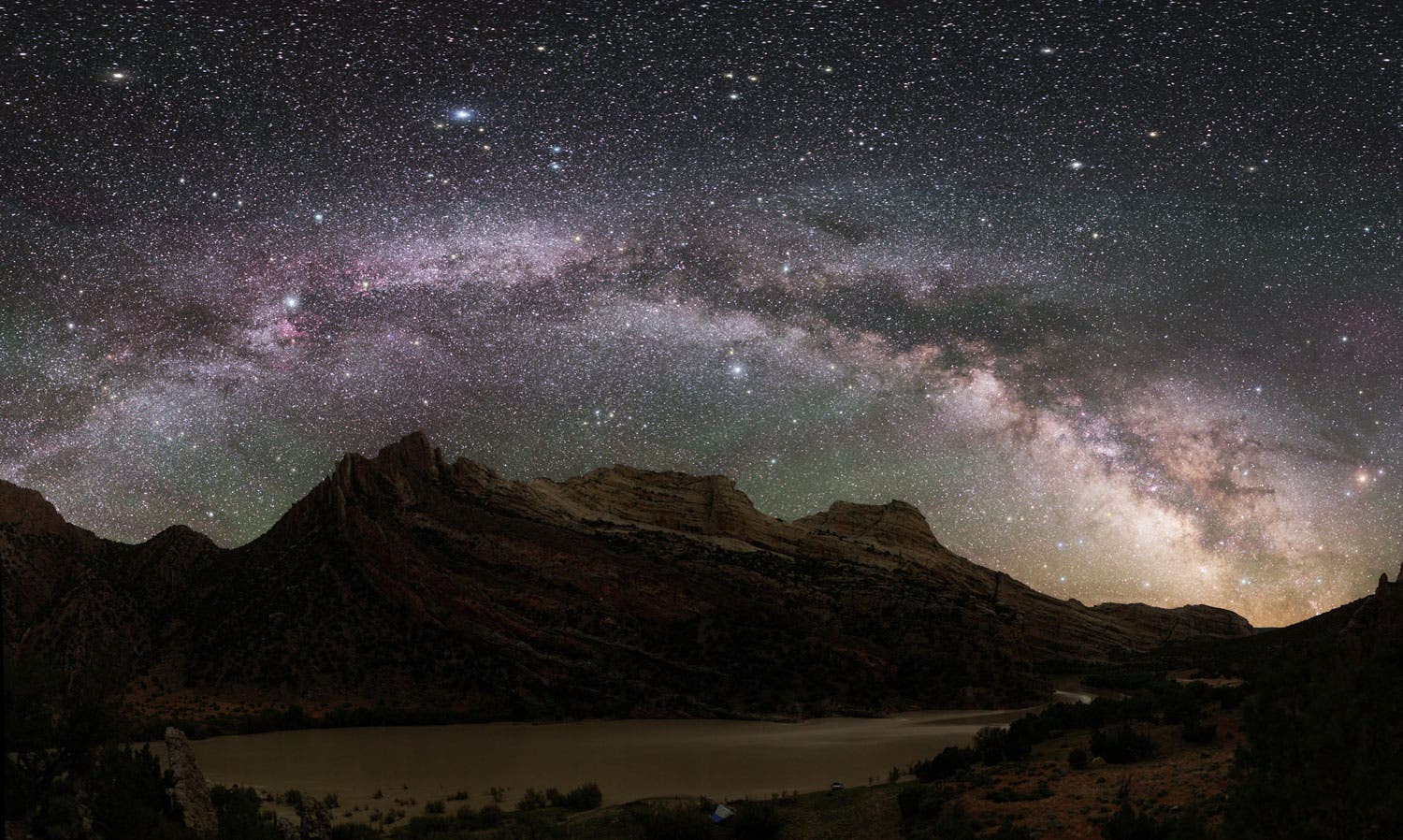
Experience Rafting on the Yampa or Green Rivers
Rafting through the canyons of Dinosaur National Monument heightens the sense of remote adventure. The dance of mountain rivers cutting into bluffs and dipping through narrow canyons makes for noteworthy rapids, like the Green River’s aptly named Hell’s Half Mile, while spots like Island Park (also on the Green) offer beaches and time for contemplation.
Originating in the Uinta Mountains, the Green River carves and passes through the awe-inspiring Gates of Lodore, just inside Dinosaur’s borders and is a picturesque spot to start a multi-day rafting adventure. Putting in at Rainbow Park, shortens the trip to one day. Popular guided tours travel seven to nine miles down the Green River, the mellower of the monument’s waterways, and snakes along the stark beauty of Split Mountain Canyon. The rafts pass stunning, colorful bands of rock while towering red cliffs rise thousands of feet from the river’s edge.
For several days on whitewater, book an excursion down the more renegade Yampa, the last undammed river in Colorado, and home to Big Joe, Warm Springs and Teepee rapids.
Class III and Class IV rapids along both rivers mandate experienced rafting only. Commercially guided trips through OARS or Dinosaur River Expeditions are a go-to, with expertise and provisions already on board. For individual rafting, a non-transferable permit good for one launch only is required to float either river. Enter the permit lottery between December 1 and January 31 prior to the year you want to raft at Recreation.gov.

Go On a Scenic Drive and Take It All In
To see natural history, a woman-built cabin, an array of geology and potential wildlife sightings, try a scenic drive along one of several designated routes.
On the Utah side, for a several-hour tour, you’ll actually start outside the monument. Island Park Road is an 18-mile drive along an unpaved road and the final eight miles wind through the monument, passing petroglyphs near McKee Spring and Green River views worth stopping for. You’ll pass the Rainbow Park Campground and then close out your tour near the Ruple Ranch homestead, another abode from days gone by. This route is best for high-clearance vehicles, and the road becomes impassable when wet.
Anywhere from one to four hours is recommended for the 10-mile drive down paved Cub Creek Road. Called an introduction to the park, the “Tour of Tilted Rocks” highlights rock formations, passes hiking trails, scenic overlooks and petroglyphs and pictographs.
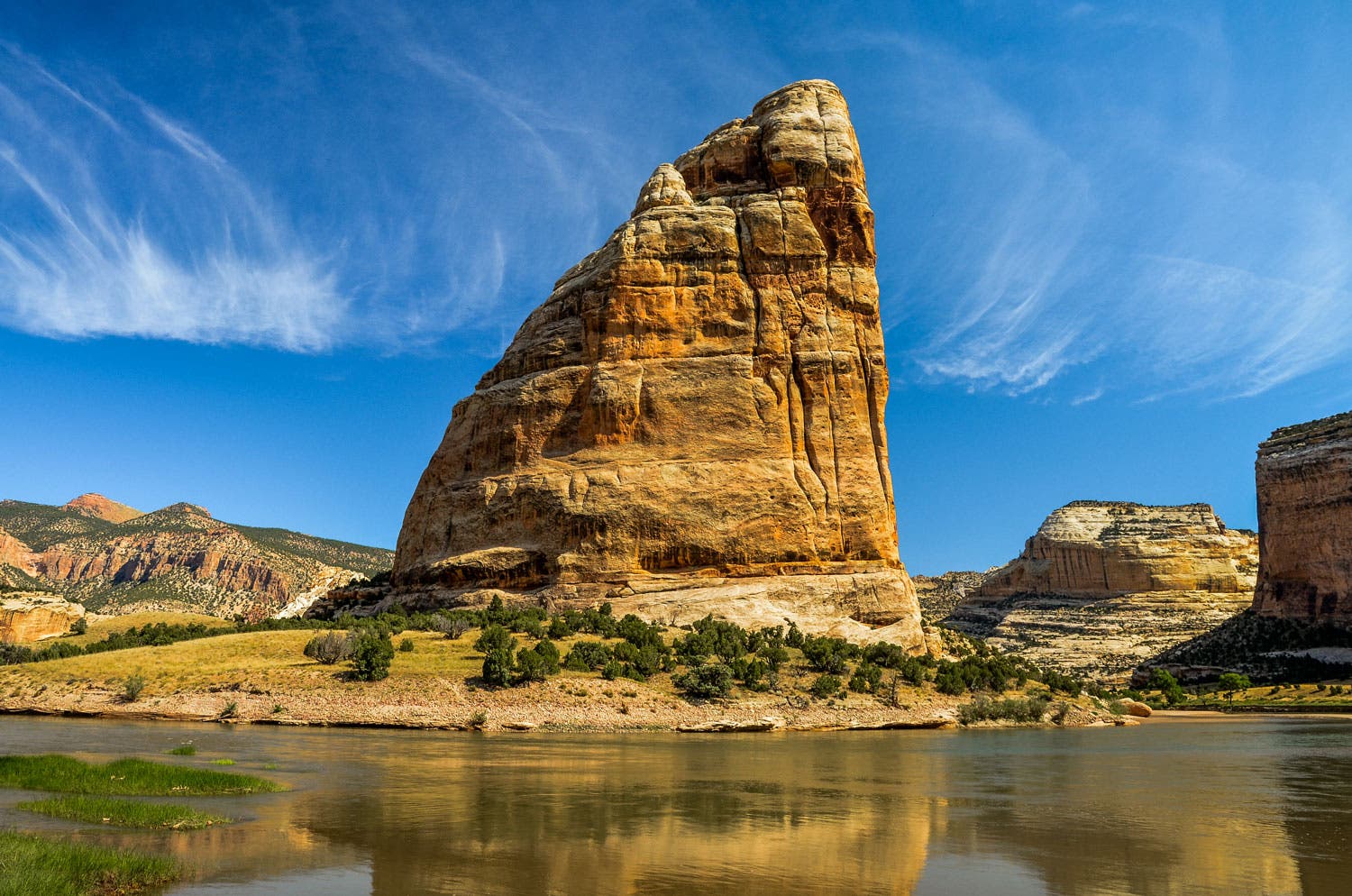
Colorado highlights include the 31-mile paved Harpers Corner Road. You’ll encounter hiking trails, picnic areas and vistas with remarkable views of the canyons and waterways. It’s a seasonal drive, as the road is closed during the winter. An offshoot of Harpers Corner Road, Echo Park Road offers 18 miles of unpaved adventure and dips down to the Green River at Echo Park.
Like Echo Park Road, Yampa Bench Road is recommended for high-clearance vehicles, also impassable when wet. With the Yampa thundering far below, this 18-mile unpaved road seems to preside over its natural surroundings.
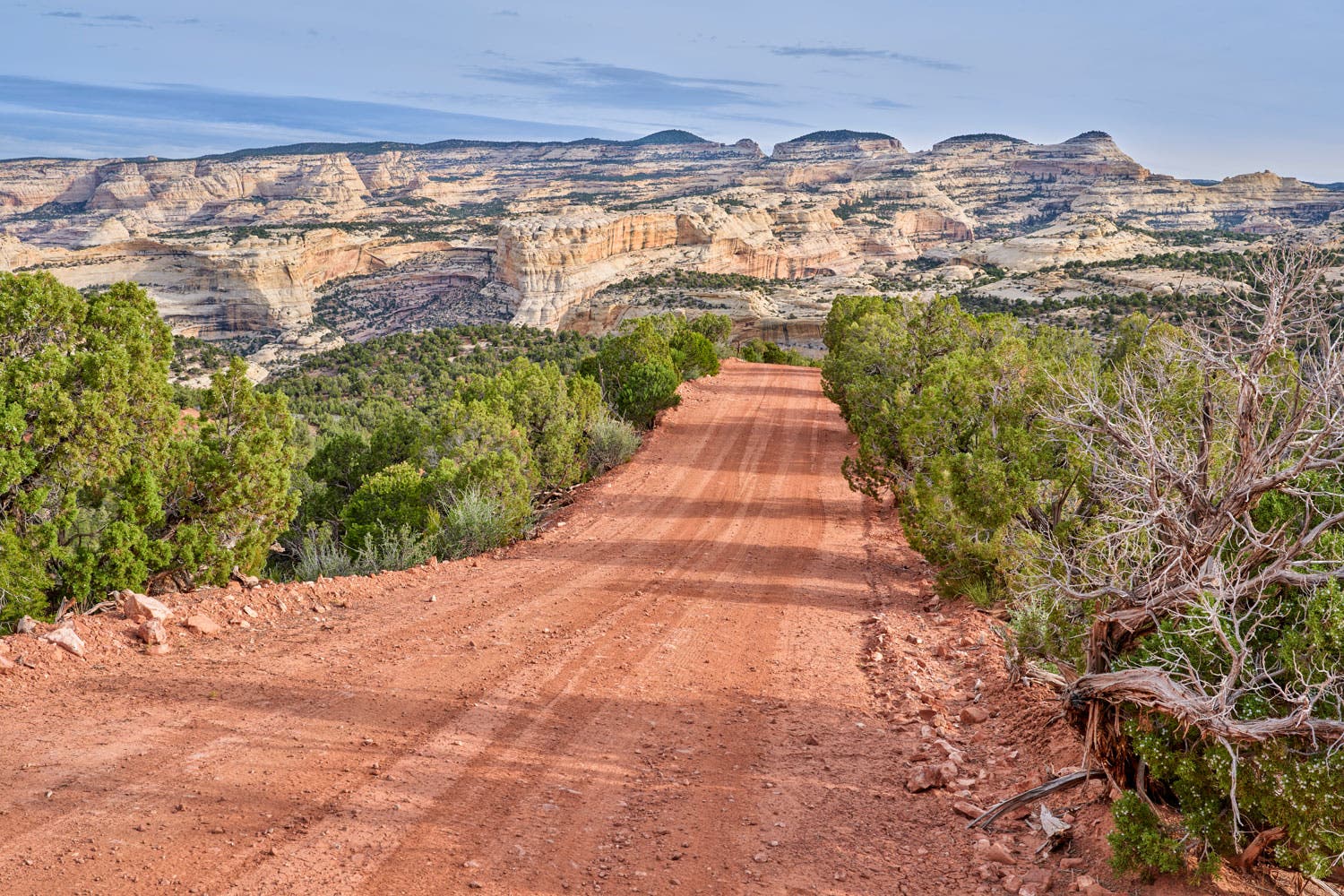
Where to Stay in Dinosaur National Monument
There are six campgrounds throughout Dinosaur National Monument—three on Colorado soil and three in Utah—with 100-plus sites to set up basecamp. Echo Park, Gates of Lodore, and Deerlodge Park are Colorado campgrounds, while Green River, Split Mountain, and Rainbow Park (no water available) are located in Utah. Reservations for Echo Park, Green River and parts of Split Mountain Group Campground can be made at Recreation.gov up to 12 months in advance; the remaining campgrounds are first-come, first-served. Echo Park, Deerlodge Park and Rainbow Park are tent-only campgrounds. None of Dinosaur’s campgrounds have RV hookups or dump stations, but Green River and Gates of Lodore can accommodate 30-foot and 25-foot-long rigs respectively. In terms of access, the unpaved road to Rainbow Park grows impassable when wet, and winter conditions hinder access to both Rainbow Park and Deerlodge Park campgrounds.
On the Utah side and almost a mile high in elevation, Green River Campground is a favorite. It’s situated roughly five miles from the Quarry Exhibit Hall and close to Split Mountain Boat Ramp, a popular takeout for canyon rafters. On the Colorado side, Echo Park Campground is one of the most popular spots offering sweeping desert-scapes. Fremont petroglyphs skirt the campground and neighboring sandstone cliffs, while nearby Steamboat Rock hovers over the confluence of the Yampa and Green rivers. Rising 800 feet from the rivers below, this sandstone butte presides over the confluence of the Yampa and the Green. Explore some natural trails that trickle down to where rivers meet.
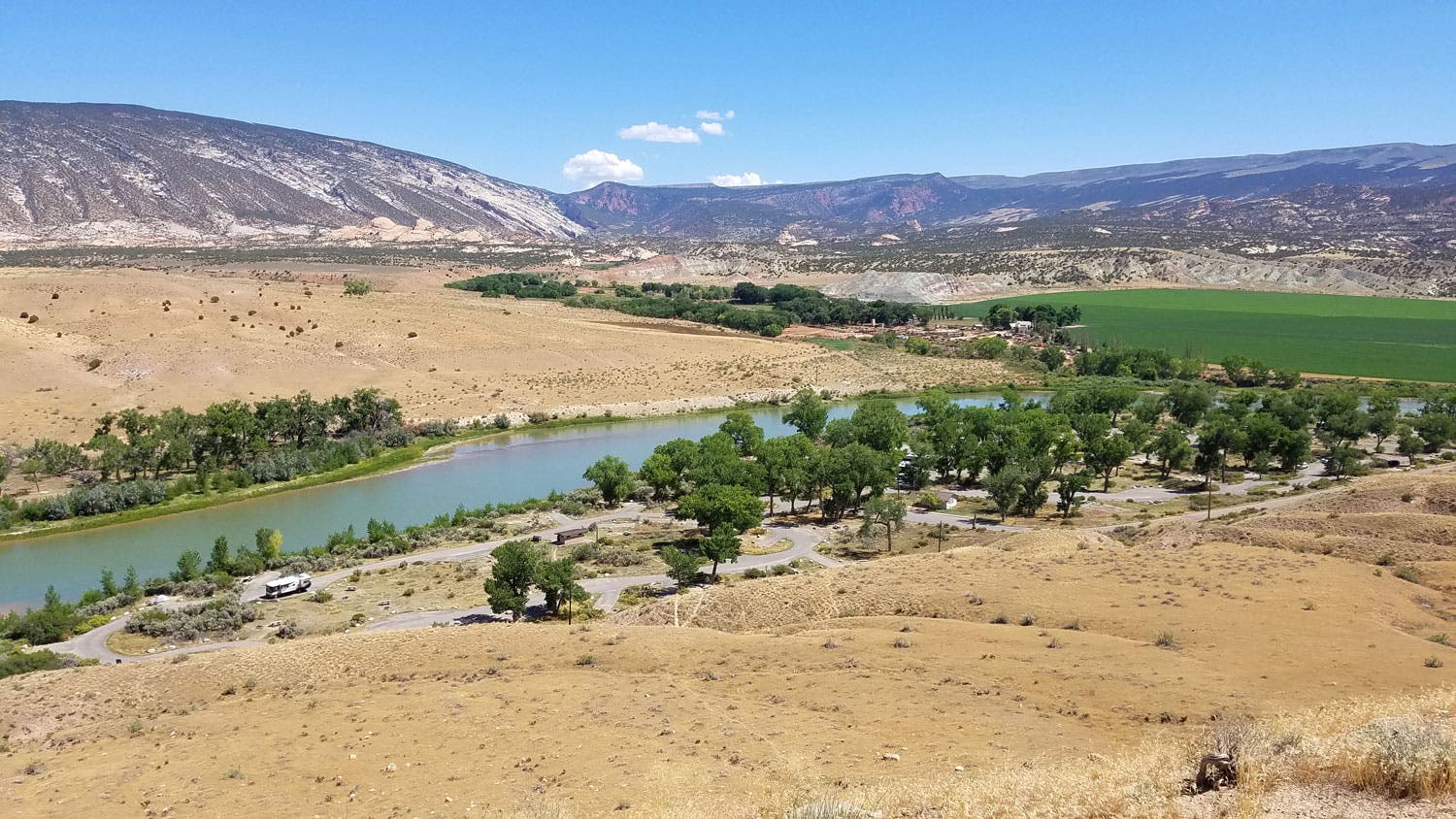
Tent and RV camping are allowed in designated sites only, or in the backcountry with a permit. While pets are allowed at the monument’s campgrounds, not all trails and facilities are pet-friendly. Try the Colorado side’s Harpers Corner Road area for hiking with the dogs: Plug Hat Butte and picnic area; Iron Springs, Echo Park and Springs Bench Overlook. On the Utah side, your leashed pups will enjoy the River Trail and the small hike to Swelter Shelter Petroglyphs.
There are no hotels inside the monument, but the park’s gateway towns like Jensen, Vernal, Dinosaur and Craig offer hotels and RV campgrounds with full hookups.
When Should I Visit Dinosaur National Monument?
Like most spots in the arid West, Dinosaur National Monument shines in late spring and throughout the fall. May and June mark the slow build to summer heat, with daytime temperatures creeping into the mid-80s by June, while September and October host a mellower, crisper sunshine: daytime temps hover in the mid to upper 70s. Summer temperatures grow extreme and are ill-advised for hiking or traveling with pets.
Most ranger programs run from late May through early September, with limited options for wintertime visitors. In winter, cross-country skiing and snowmobiling are permitted on closed portions of designated roads, and Split Mountain Campground stays open year round.
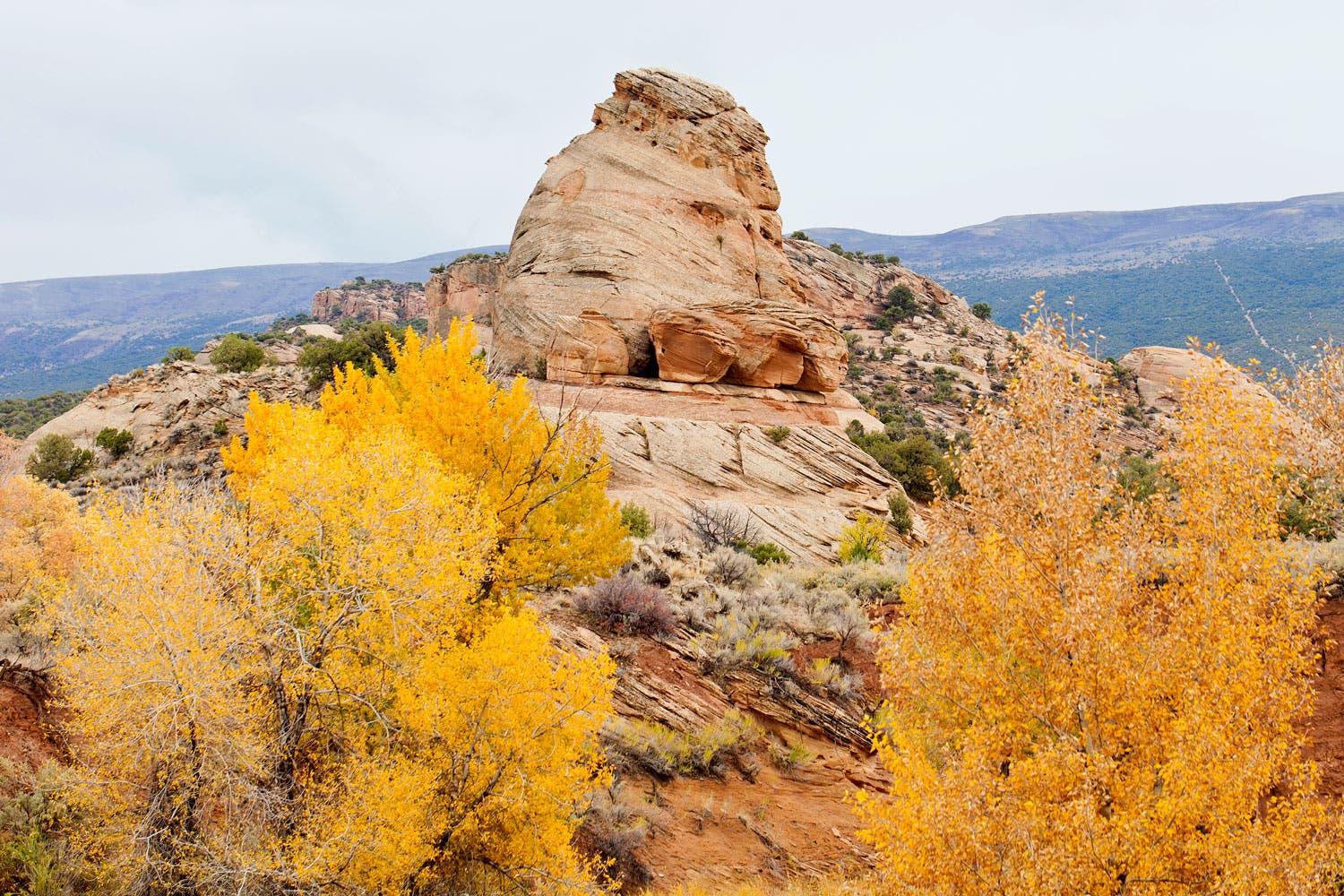
For more information:
Dinosaur National Monument, National Park Service
www.nps.gov/dino
Make it a road trip and visit three national parks and one more national monument.